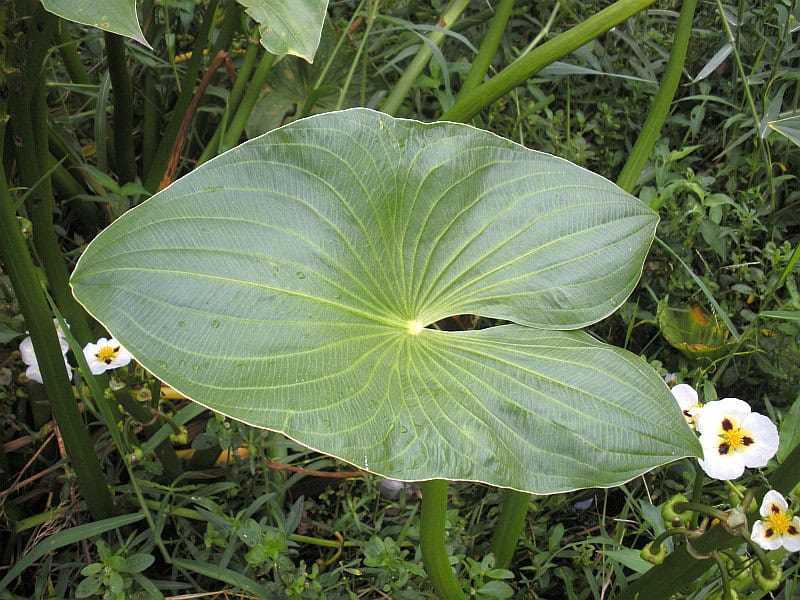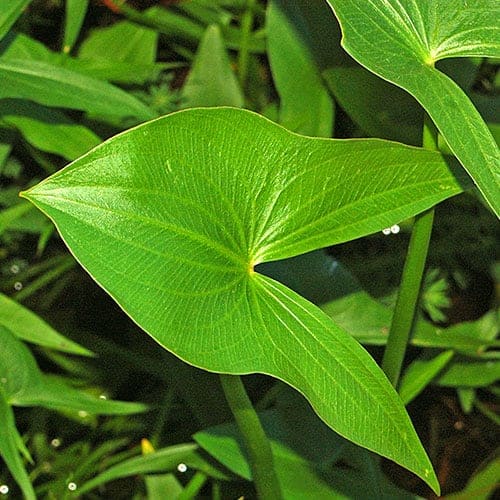Giant Arrowhead
weed identification
Young leaves are stemless and submerged. As the leaves become mature, they emerge from the water on long stalks and form an arrowhead shape. Leaves can be up to 28cm long and 23cm wide. Flowers are cream/white with a burgundy/red spot on each petal and yellow centre.
Prefers slow moving water bodies such as ponds, dams, lakes, and wetlands.
Reproduces via seed.
Spread by seed (maturing in autumn), which is transported via waterways, or in mud adhering to clothing and footwear, animals, and machinery.
Cultivated for their edible rhizomes by Native Americans.
What does Giant Arrowhead look like?
Disadvantages of Giant Arrowhead
Full coverage of a pond or dam by Giant Arrowhead can cause significant problems such as:
- Dense infestations causes deoxygenation of the water
- Shades out other aquatic plants
- Causes fish and other aquatic life death
- Provides breeding ground for mosquitos
- Changes the water chemistry to favour harmful algae and bacteria
treatment
AQ200 Aquatic Herbicide + Wetting Agent – Chemical Herbicide designed to kill emergent weeds quickly. Use on mild to severe infestations.
Aquatic Weed Rake and Razor Combo – DIY physical removal. Ideal for mild infestations, sensitive water bodies or to aid herbicide treatment.
Aquatic Harvesting – Large amphibious machine that cuts and clears emergent aquatic weeds. Book this service for severe infestations or for larger water bodies.
prevention options
Aerating Fountains – Reduces the severity and likelihood of aquatic weed infestations. Use in any body of water.





